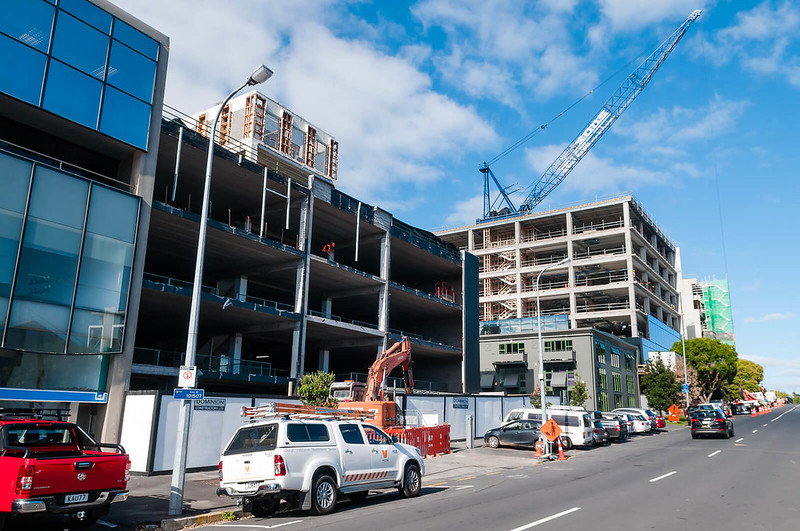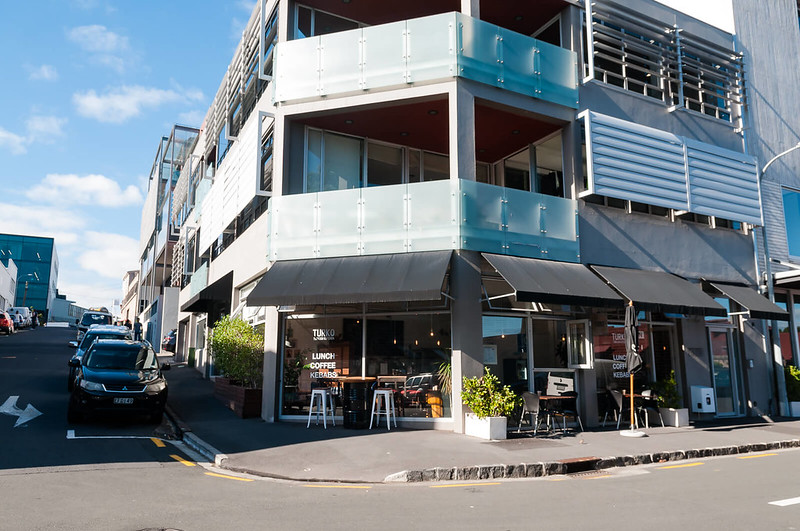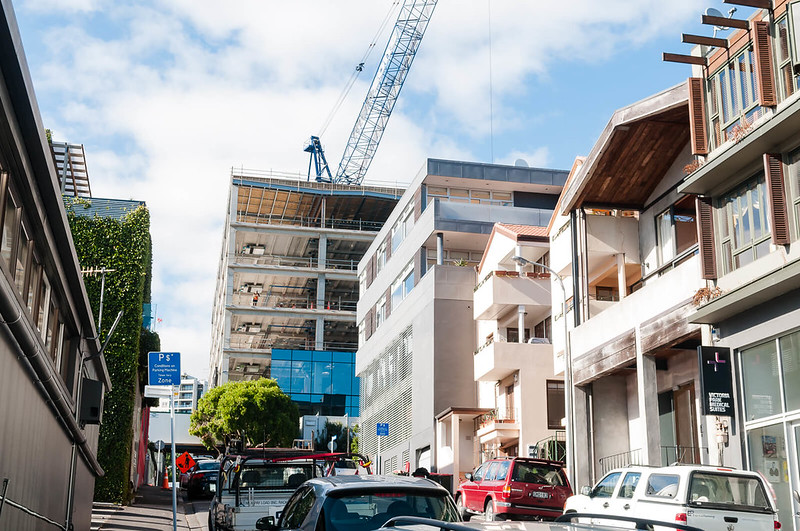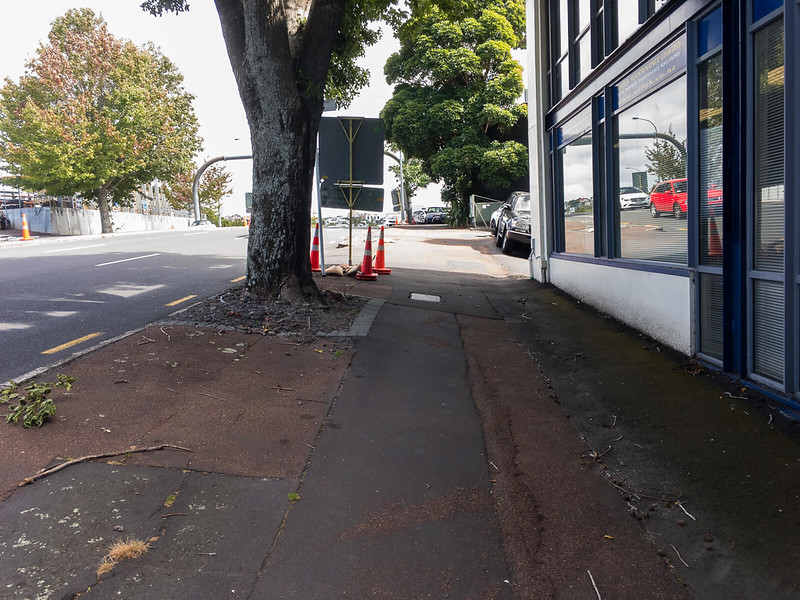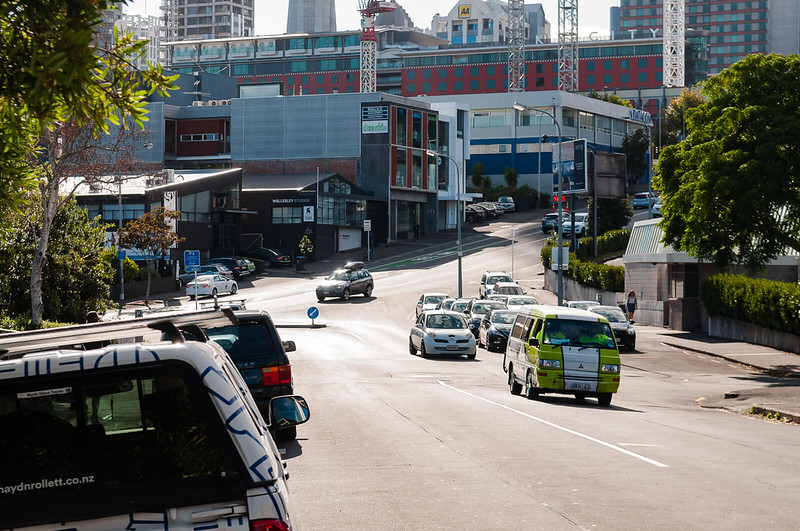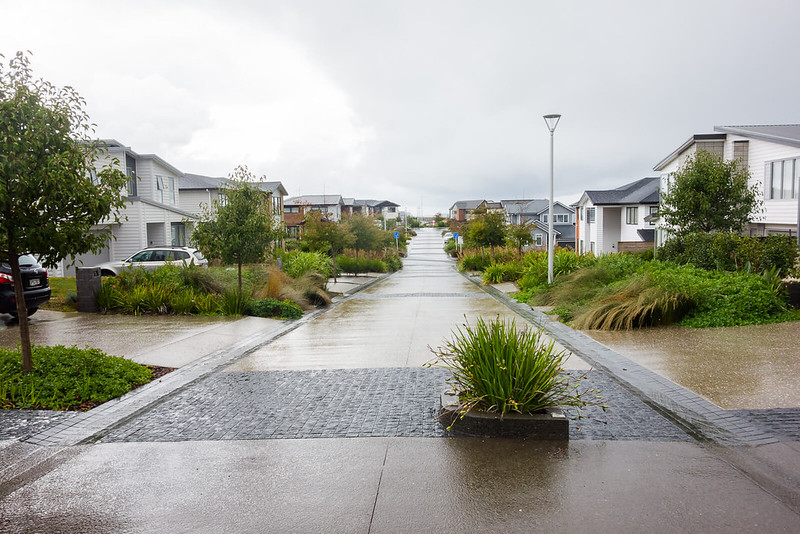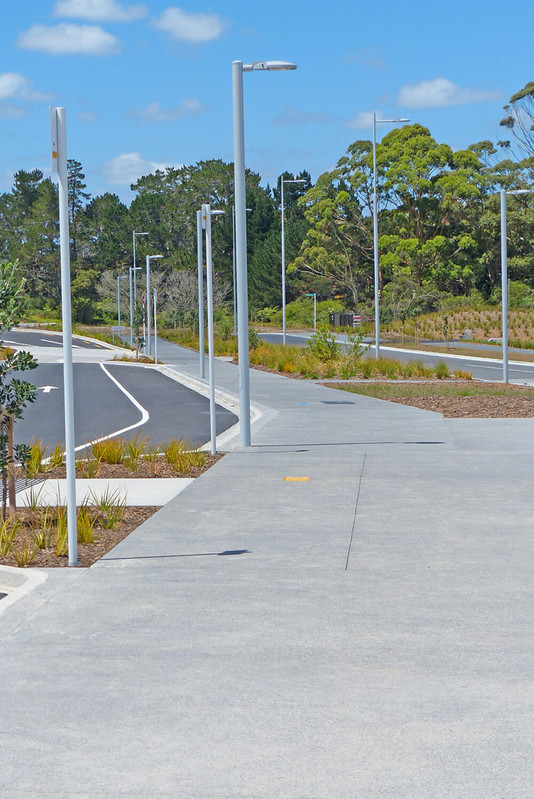Western Victoria Quarter Part 1: Introduction
After arriving back from a stint in Vancouver and Amsterdam, my partner and I decided we wanted some outdoor space and another bedroom. While our mobility needs are 100% met by walking, cycling and transit, a car park was also on the check-list to ensure that we made the most of Auckland and New Zealand.
We couldn’t find anything that met our rather simple goals in the city and couldn’t stomach moving any further out (Mount Eden is the wops to me), so we started looking at new builds and narrowed it down to a handful of developments - one on Beach Road, one in Eden Terrace and one down the end of Sale Street, in what Auckland Council calls Victoria Quarter. I find Beach Road generally unpleasant, Eden Terrace lost out due to poor amenity and being at the top of a hill, kneecapped by the loss of its CRL station. Ultimately, we decided on the Victoria Quarter Development. There were a lot of reasons, but the Council’s goals for the area played a part in the decision.
Since signing the paperwork mid last year, I’ve spent a lot of time in the area, mostly to watch the demolition and hole digging that have occurred on site so far. Unfortunately, like anything I look at for long enough, the problems started to mount. The area is not ‘fit for purpose’. So I threw together a document over a few nights and submitted it to the chair of the Waitematā Local Board and the Waitematā and Gulf Ward Councillor.
That submission sought out to essentially say one thing: why is nothing happening to achieve the Council’s stated goals for the area?
This will be the first in a series of posts based on that submission, with some expansions. All photos are my own, unless referenced.
Victoria Quarter?
The oldest reference to Victoria Quarter that I can find is in the Auckland Council District Plan from 2005. It’s conceptual existence may go back much further, but I cannot find any reference to it on the Council search engines, nor Google.
It’s defined by the Auckland District Plan as the area bounded by thick black lines below:
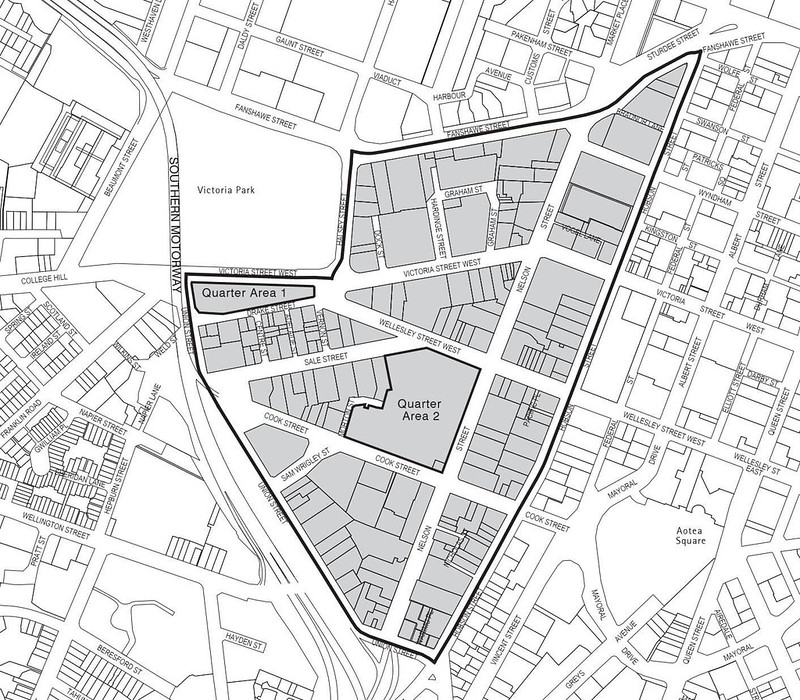
The ‘Nelson and Hobson street upgrade’ at least exists as a line item in various Auckland City Centre Advisory Board meeting minutes and on the Projects in the city centre page while the Victoria Street Linear Park has been well discussed in the past. I’m mostly interested in the western corner, between Victoria Park, Wellesley Street and Cook Street, which has no known plans in place.
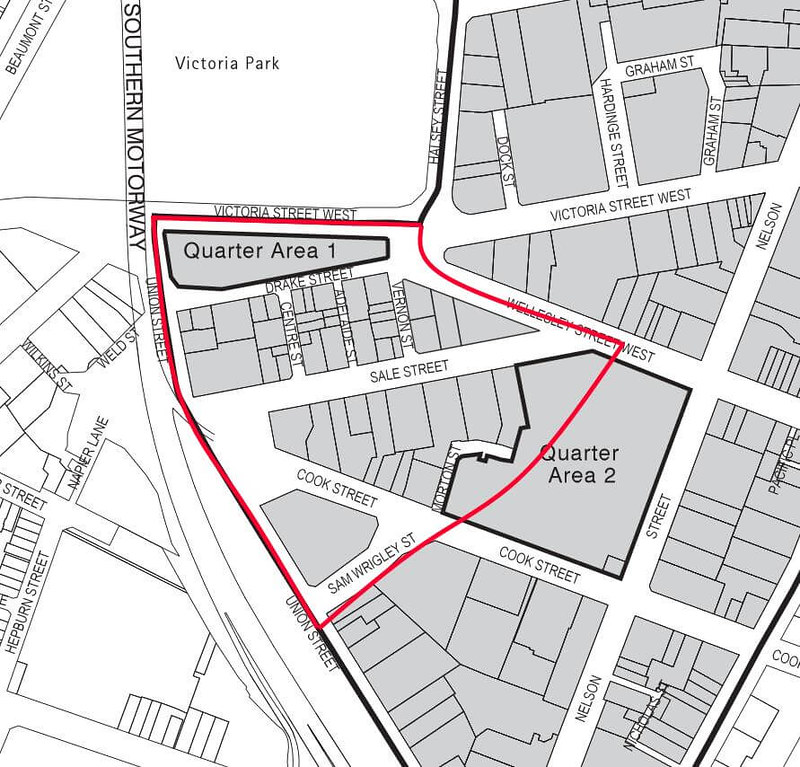
Victoria Quarter
A bit of history
I am not qualified to describe the history of Auckland in any detail, but some interesting facts include that it’s one of the earliest places to be settled in Auckland, Drake Street used to be a small cliff overlooking Freemans Bay before reclamation was completed around 1901 (creating Victoria Park) and the Destructor (now Victoria Park Market), completed in 1905, converted garbage into electricity. Fascinating.
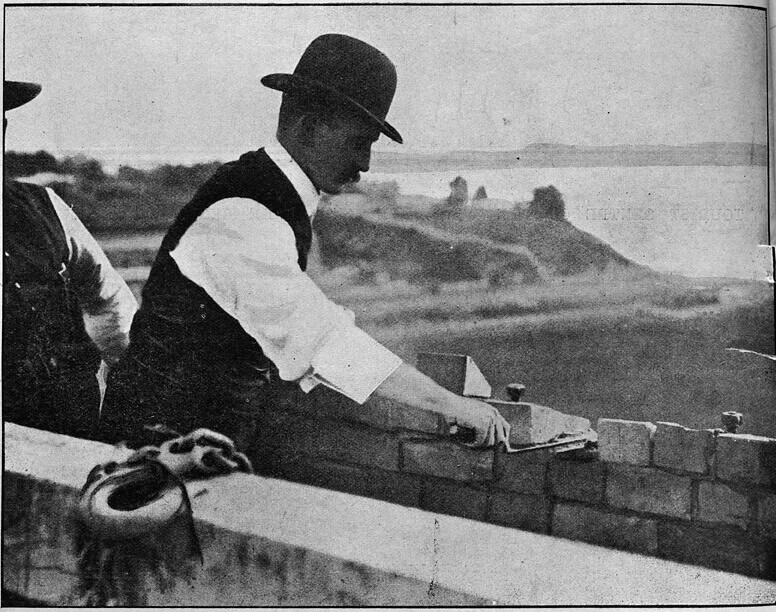
22 June 1905 - Mr A. M. Myers, Mayor of Auckland laying the last brick on the chimney stack of the city destructor at a height of 125 feet (Sir George Grey Special Collections, Auckland Libraries, 7-A12012)
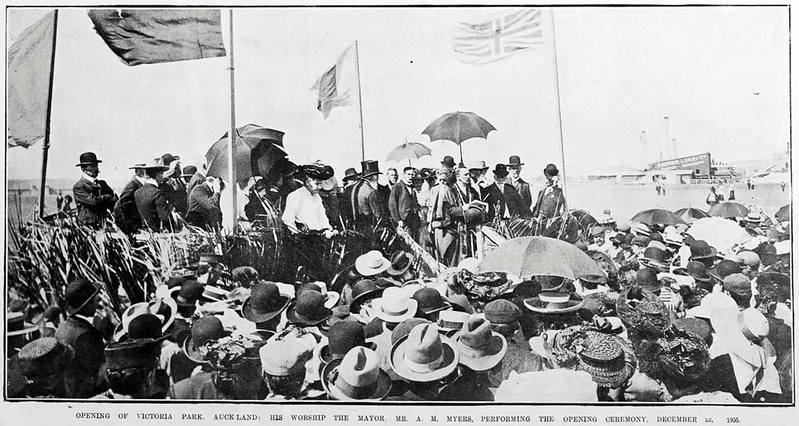
20 December 1905 - Opening of victoria park, Auckland: His Worship the Mayor, Mr. A. M. Myers, performing the opening ceremony (Sir George Grey Special Collections, Auckland Libraries, AWNS-19051228-15-4)
But fear not - I will not be attempting to use nostalgia to convince you that this area has value because it is old - I’ve not seen any evidence that it was ever much more than a slum adjacent to various industrial areas and the city morgue. It even had the plague. There is a reason they built the motorway through it in the 60’s and as a result Victoria Quarter and the Harbour Bridge are inexorably intertwined, but we’ll talk about that later.
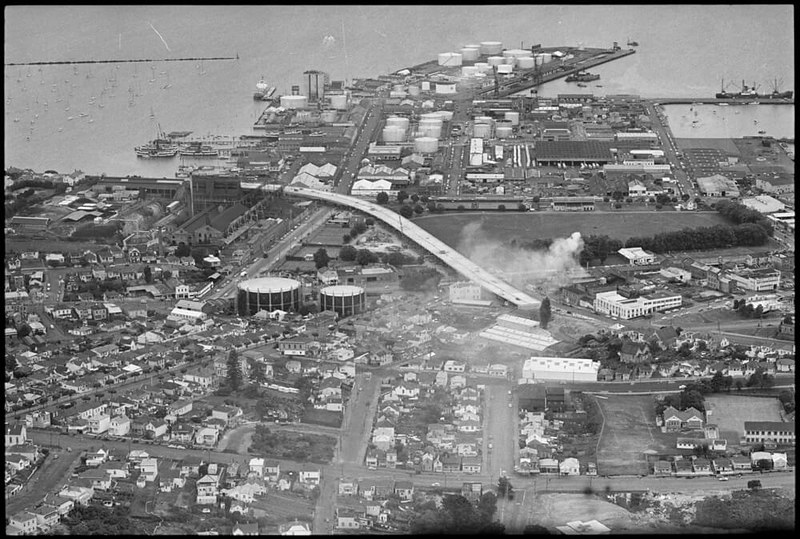
28 November 1961 - Aerial view north across Freemans Bay and Victoria Park (centre) to the Tank Farm, showing gasometers at the intersection of College Hill (centre right) and Franklin Road (left to centre) and the Northern Motorway (Sir George Grey Special Collections, Auckland Libraries, 1370-29-32-3)
Not a lot has fundamentally changed since the Harbour Bridge was built - just a gradual move from industrial to light industrial and finally to office space, hospitality and residential.
Here and now
Commercial
While a large number of buildings in the area of are primarily low rise and semi-industrial, many are office space. A list of newly complete, refurbished and or currently under construction includes:
- Dentsu Aegis (68 Sale Street)
- Masons Commercial 2 (46 Sale Street)
- 32 Sale Street
Including some residential developments below, six of the nine sites on the Southern side of Sale Street were either recently rebuilt/renovated or are currently under construction.
Developments on Sale Street
Hospitality
The much lauded Clooney secludes itself from the street, while revellers at The White Rabbit, La Zeppa, TomTom and The Oakroom contend with narrow footpaths of Drake Street. A handful of other cafés are present, though few have any possibility to interface with the street. Turko makes best use of its narrow footpath to provide some street activation.
Turko, Corner of Drake and Centre Streets
Victoria Park market is isolated from Victoria Park, College Hill and the surrounding Victoria Quarter. It is not expected that Victoria Street will be reduced in width for the foreseeable future. This, coupled with poor connections through to Sale Street, and anywhere else, results in the market being somewhat dead.
”Auckland icon returns to its former glory,” proclaims the website, but while the place has certainly been transformed into a range of business, food and beverage and retail tenancies, the overall vibe is bleak and ghost-town like. “One of the cultural centres of Auckland, accessible to all, has been reduced to a shadow of its former self… it’s disappointing and more than a little sad…” says a recent Trip-Advisor review.
Metro Magazine, The ugly friend: From a carpark to apartments
Finally, a Swiss-Belsuites hotel has emerged atop the multistory carpark at the intersection of Drake, Victoria Wellesley and Vernon Streets.
Residential
Excluding the existing residences within Victoria Quarter, on Nelson and Hobson Streets and surrounds, properties currently under development in the immediate vicinity comprise of more than 350 units, housing upwards of 600 people.
- Grace VQ (100+ units)
- Sale Street Residences (14 units)
- Union Green (150 units)
- Union & Co (100+ units)
- 132 Halsey (38 units, still in presales)
The highest concentration existing residential is on Vernon Street, but there are units dotted throughout the area.
Vernon Street residential units alongside a new office block
Transit
Wellesley Street is currently and planned to be a major bus route into, across and out of the city, with the City Centre Future Access Study (CCFAS) stating a requirement for approximately 150 buses per hour along Wellesley Street in the 2021 Reference Case.
Existing and imminent routes include every alternate Northern Express, western buses and the Outer Link.
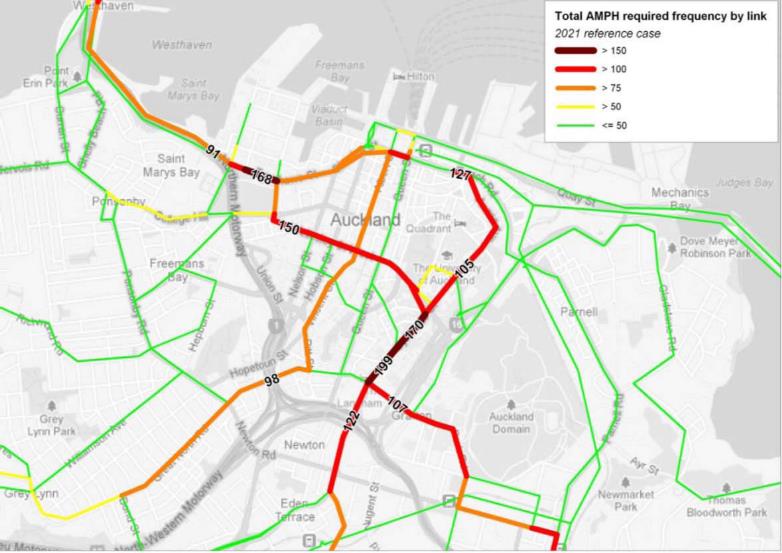
Bus Counts on Wellesley Street in the 2021 Reference Case (CCFAS)
The now finalised and imminent Central Suburbs New Network implements a base of 52 buses per hour at peak. This is calculated by taking 60 minutes and dividing it by proposed service frequencies.
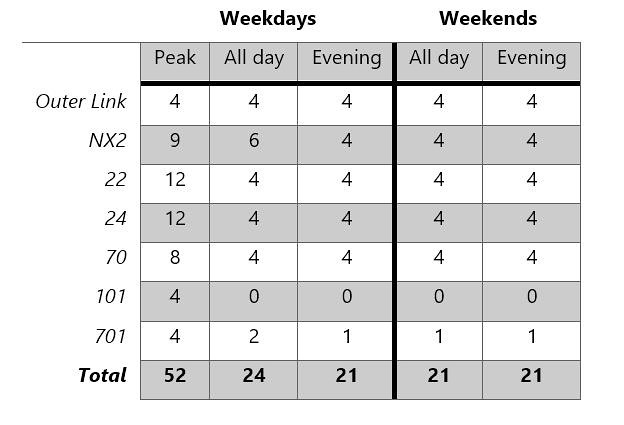
Wellesley Street Bus per Hour count as calculated from figures provided by Central Suburbs New Network
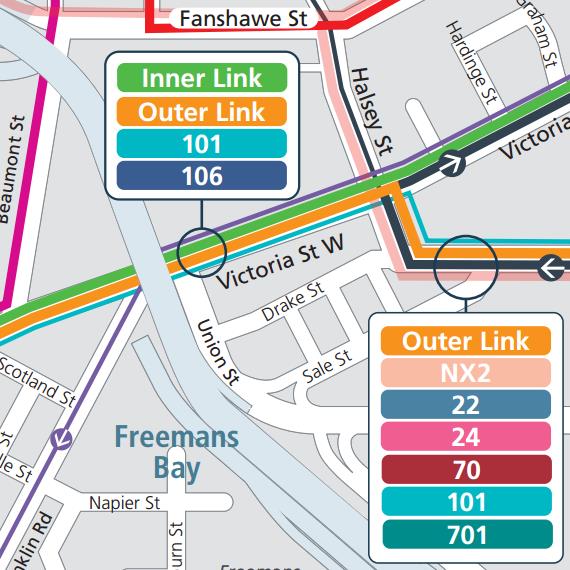
Approved bus routes along Wellesley Street as part of Central Suburbs New Network
Potential BRT/tunnelling (detailed in CCFAS and the AT Airport and Mangere rail design) is completely unplanned and unbudgeted for and is assumed to not be occurring.
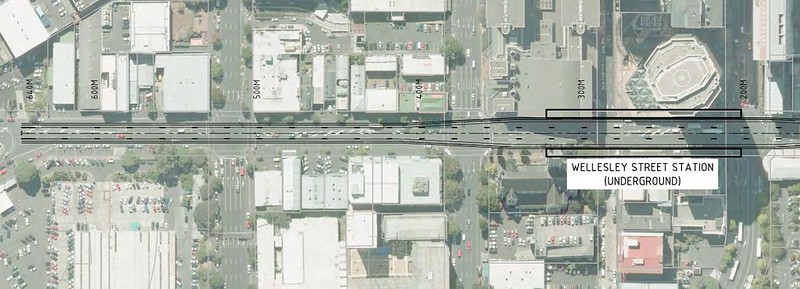
Proposed alignment for BRT tunnel in AT Airport and Mangere rail desing design
Sale Street is around 600m away from the future Aotea Square CRL station, less than a 10 minute walk, so it’s clear that Victoria Quarter is an area that is very well served by transit, and that is only set to improve.
Transient Use
Pedestrians and cyclists pass through Victoria Quarter to access Victoria Park, the grocery store at the foot of Franklin road, College Hill, Wynyard Quarter and the now-approved Sky Path.
Vehicles passing through the roads making up western Victoria Quarter are doing so to bypass Victoria, Wellesley and Hobson Streets or access large, surface level parking facilities at the City Works Depot.
Close proximity to the future NZICC will likely encourage both pedestrians and cars through the area.
Parking
This area is supported by a large amount of publicly accessible parking facilities:
- Tournament Parking (City Works Depot)
- Swiss-Belsuites (which has emerged with more parking than it started with)
- Sky City
- Victory Christian Church
- AT Sale Street (121 Sale Street)
- Union Street angle parking, between Placemakers and Wellington Street
- Union Street angle parking, near Drake Street
This list does not include the 750-900 parking spaces to be provided by the NZICC upon completion.
Goals
That all is what is, but what of the future? When I mentioned the Council’s ‘goals’ previously, I was referring to set a of specific statements in various plans:
Auckland Council District Plan Operative Auckland City - Central Area Section 2005, Section 14.10
This document has a range of objectives, policies and strategies laid out around:
- Built Form
- Heritage
- Public Open Space
- Social And Economic
- Pedestrian Access, Street Quality And Gateways
- Public Safety
- Ecological Sustainability
- Transport
Overall it’s a great document, they close it off with the following (my emphasis):
It is expected that the provisions adopted for the Quarter will result in the following.
- An environment that encourages activities which enhance the vitality, vibrancy and interest of the Quarter while ensuring that their adverse effects are avoided or mitigated.
- A high quality environment exhibiting good urban design, residential amenity and quality open spaces.
- The retention and enhancement of existing scheduled heritage buildings, heritage features and character areas through the appropriate design of adjacent built form.
- A diverse and vibrant environment which complements the Central Area and which provides a good standard of amenity for building occupants.
- Comfortable, safe and attractive pedestrian accessibility throughout.
- Quality buildings that promote sustainable design, the distinctive identity and desirability of the Quarter as a location within the City.
- Adaptable built form which encourages the reuse of building space and activities at ground level.
- The maintenance and enhancement of the existing character of the area including public open spaces.
- Retention of the historic character of the Former City Destructor/Victoria Park Markets Site while enabling the redevelopment of the existing car park building in a complementary sustainable manner.
- The comprehensive and integrated development of the Former City Depot Site which provides a high level of internal and external amenity, quality public open space and which sits comfortably within the Quarter.
Auckland District Plan (Annexure 12)
Principles
Vision: The dynamic western CBD fringe providing a diverse alternative choice of intensive inner city urban living and working opportunities.
Encourage residential and community amenity Ensure that redevelopment provides the requisite community needs for the future residential and commercial occupants
Establish a broad range of parks, squares and plazas Provide an open space network that enables a linkage from Victoria Park through the quarter and to the open spaces of the core. The improvement of the amenity and streetscape of Hobson, Nelson, Fanshawe Street and the motorway is also necessary to enhance this
Reconnect Victoria Quarter with inner city suburbs and the rest of the CBD Redevelopment will require additional linkages over the arterial roads and motorway in order to connect future occupants with the CBD and inner city suburbs
Recognise and celebrate significant heritage features Note the former shore line, Iwi and heritage buildings/sites (Maori heritage sites, Victoria Park Markets, Freeman’s Hotel, Berlei factory, Empire Tavern).
Reduce dominance of the existing road network so as not to compromise the liveability of the quarter
Improve pedestrian amenity of primary access routes to the CBD whilst enabling access efficiency and providing public transport To improve the appearance and walkability of access routes as people places whilst retaining transport (private/public) importance
Quality design for private development and in the public realm Advocate quality design for private development and lead by example in the public realm
Existing Flavour (Experience of place)
Dominance of traffic - disjunctive development - diverse development - barren and bleak in parts - through passage - hard and urban - tourism destination - non descript - mix of older character areas with industrial development - intimate parts - active in parts
Future Direction
Transition from fringe to core - place of social and commercial interaction/exchange - internal urban activity - internal focus centre of gravity - pleasant environment - low key - cruisy - city family location - promote activity generators - interlinking network of urban neighbourhoods - liveable & creative
Existing Character (Physical)
Large areas of poor quality design - housing diversity - large blocks
- lack of connections - basin topography - former shoreline heritage - Victoria Park - Victoria Park Markets - warehouse type buildings - creative industries
Future Direction
Creative industries - good urban design - diverse housing stock - redevelopment of larger sites to act as catalyst for quarter linkages
- celebrated heritage experiences - good pedestrian amenity of primary access routes - good open space network reduced transport dominance
Auckland PlanCentre Master Plan (Move 2 - East-West Stitch)
The Auckland District Plan, Auckland Plan and City Centre Master Plan identify Victoria Quarter as an area of priority:
Victoria Quarter becomes a vibrant urban community, with housing catering for families seeking an inner-city lifestyle, as well as singles, couples and students. Some development will be mixed-use, providing work and living spaces under one roof.
With some fairly specific outcomes defined, including:
- SO3 Meeting the Needs of its Residential Population
- SO5 An Exemplar of Urban Living
- SO7 Walkable and Accessible
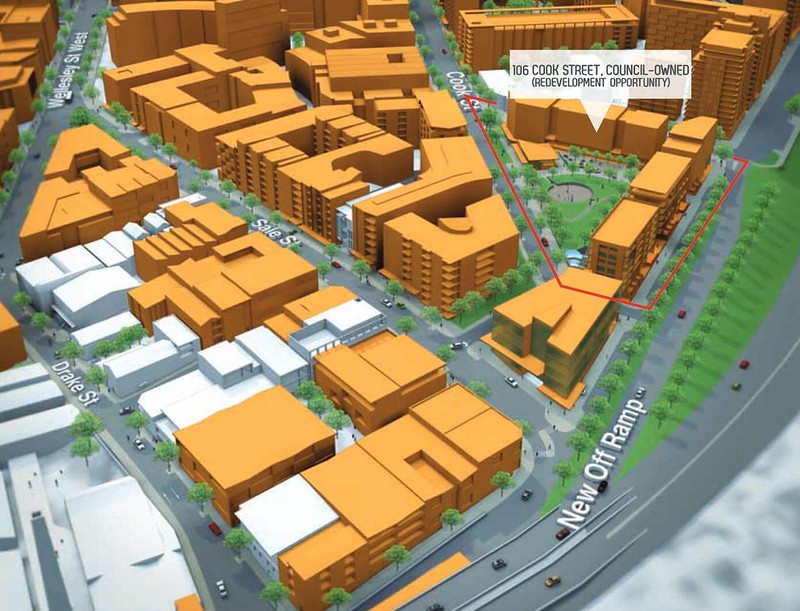
City Centre Master Plan Visual representation of future state
Victoria Quarter Development Opportunities, CCMP
That all sounds great, but, a caveat:
Significant investment in amenity of the area and its streets and spaces will be important, as will greater connections across the motorways to Freemans Bay and Freemans Bay School, which is set to double in size.
Brownfield, Greenfield, Density, The Environment (and everything else)
Victoria Quarter should be an excellent example of a walkable, mixed use, medium density, brownfield development for all to see. The epitome of ‘up not out’. This and the aforementioned Council goals matter because Auckland and New Zealand need to be convinced that this sort of housing is not only acceptable, but preferable. The economic and environmental costs of suburban sprawl will never be addressed otherwise, and, like encouraging transit use, you need to present a workable alternative if you want change.
We see that the Council already understands that these sorts of brownfield developments help to meet transport goals and deal with congestion (Auckland Plan, Chapter 8)
high-density and mixed land-use patterns which reduce the demand for travel and shorten trips
and reduce environmental impact (Auckland Plan, Chapter 13)
The challenge for Auckland is to separate the link between GHG emissions and development, economic growth, and energy use. This will require a transformation from a fossil fuel-dependent, high energy-using, high-waste society to an ‘eco- or liveable city’. A liveable city is typified by sustainable resource use, a quality compact form, an eco-economy, and transport and energy systems that are efficient, maximise renewable resources and minimise reliance on fossil-based transport fuels.
But we need some convincing… (Auckland Plan, Chapter 11)
At present there is a limited but growing market for intensified housing. The reasons for this include the traditional New Zealand preference for detached homes, expectations of the size of housing that far exceed incomes, and examples of poorly designed apartments, especially in the CBD.
What especially doesn’t help is that we have brownfield developments such as Victoria Quarter, that are stuck with poor urban amenity, and greenfield sites with perfectly smooth, compliant, accessible footpaths, correct gradients and lovely landscaping. I don’t care how this is ultimately paid for, only about equality of outcomes - there is nothing stopping the council putting a levy on developments for improvements for brownfield sites. Nor do I intend to to pour scorn on areas like Stonefields, Long Bay or Hobsonville Point - my intent is to highlight that it is difficult to convince anyone that a walkable, transit oriented, medium density, mixed use community is for them, their children and their retirement when the footpaths and streetscape looks like this:
Footpaths on Cook Street
… or this
Intersection of Sale and Wellesley Streets
instead of this:
Shared space in Long Bay development
… or this:
Hobsonville Point © oh.yes.melbourne [Sydney Struwig]
Who cares if you can reduce your dependence on your car if it’s too awkward and dangerous for you or your children to walk anywhere?
Now what?
The area is currently rife with unnecessarily wide, unsafe streets and dangerous intersections, with car parking squeezed in everywhere possible at the cost of pedestrian amenity. Uneven, inappropriate and inaccessible footpaths are reduced to almost nothing to allow for further car parking and are almost always blocked by street furniture, garbage/recycling bins and parked cars. We have clearly define goals for the area, but unlike for the new-build suburbs, no ‘pre-work’ is being done to prepare the area or address the many failings for current or future residents. This is despite the fact that the area is already well connected by transit and well populated with office workers, residents and hospitality guests. The area is undergoing strong development and growth, with at least 500 new residents and hundreds of office workers expected within the next 2 years.
I will set out to describe the major obstacles to the vision for Victoria Quarter in the hope of progressing the discussion around the amenity provided to residents of greenfield vs. brownfield developments and that of getting the Council to begin creating (and publishing) real commitments to their ‘vision’ documents. NZTA, Auckland Transport and Auckland Council already have the to tools to fix these issues, so I will avoid being overly prescriptive.
I am not interested in a gold-plated, Wynyard Quarter style, ground-up redevelopment - just a plan to address the major shortcomings.
Next Time
I’ve broken the rest down into three parts:
